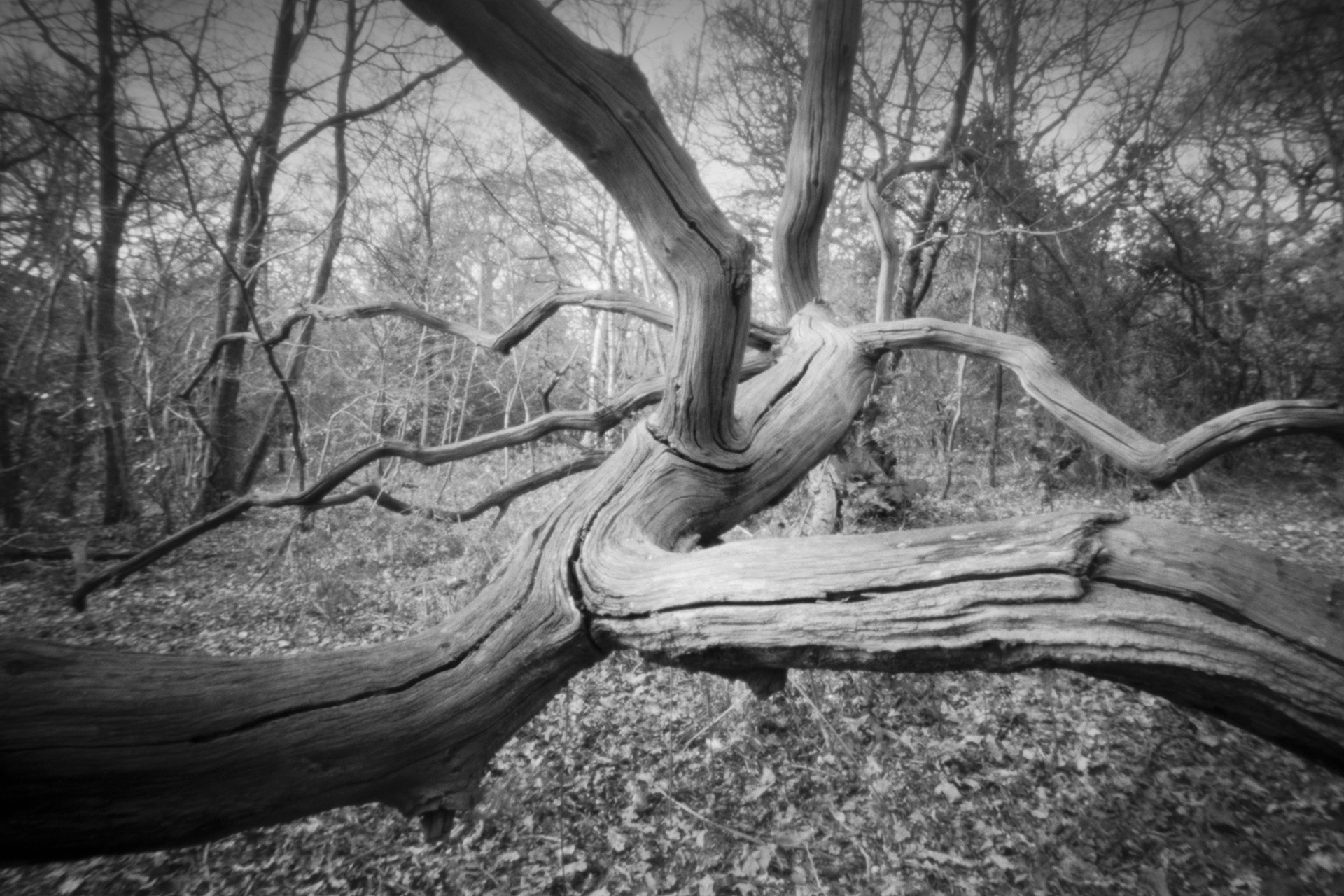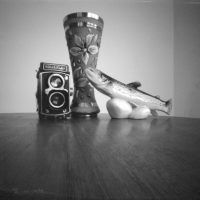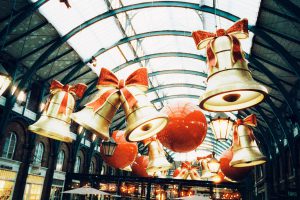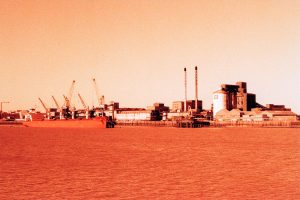I was honoured to be contacted recently by Andrew Keedle @apkeedle, a twitter film photography pal, asking if he could reproduce one of my images to make a cyanotype and kallitype print. YES was my very quick reply! I’d never before had someone else print my film work, let alone use an alternative process such as cyanotype and kallitype.
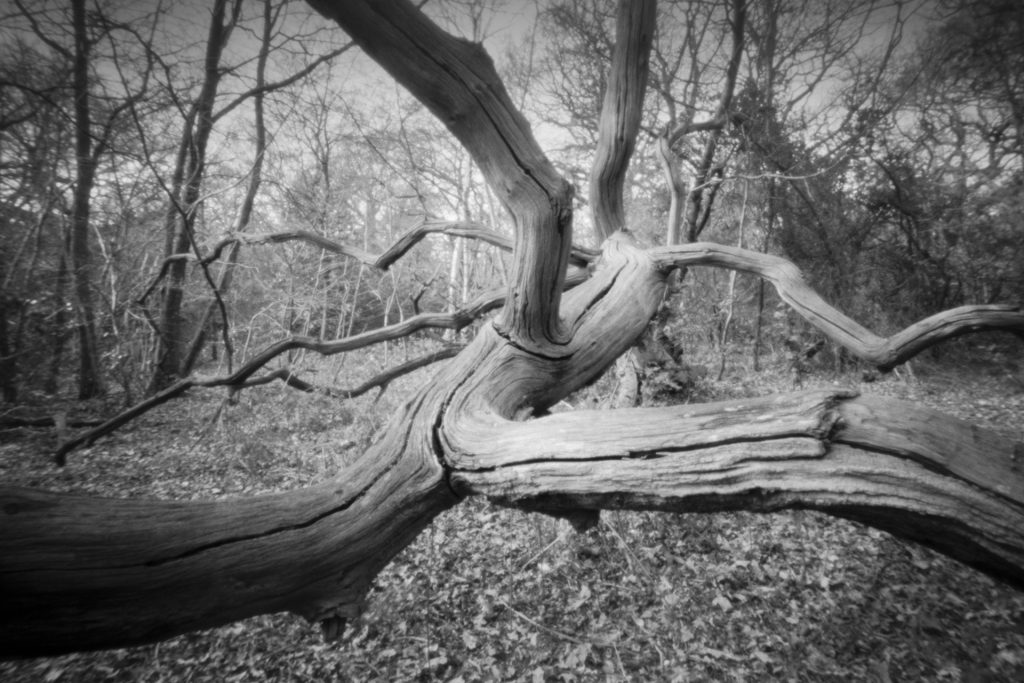
This image is a favourite of mine taken using an Ondu Multiformat Pinhole camera and Ilford FP4+ 120 film rated at 100 and developed in Ilfotec HC 1+31. It is one of those scenes that could be easily overlooked but the enveloping branches and deep cracks of the slowly decaying tree totally captivates me and I find myself returning to it again and again. I’ve even printed and framed it for my own wall.

I provided Andrew with two digital files, my edited tiff that I had used for my print which had some contrast adjustment, a bit of dodge and burn and some sharpening applied. Then a flatter file that gave Andrew a more neutral point if that’s what he needed to work with. From those files he created a digital ‘negative’ using an inkjet printer and acetate – it’s brilliant when the traditional analogue meets the modern!
Now, I can’t even begin to understand the science of creating these images – but let’s just say a solution of light sensitive chemicals and metals is applied to paper. Once dry, you put your negative on the top, sandwich it down with glass and then exposed it to ultraviolet light. (Which is why cyanotypes are also known as ‘sun prints’.) From there the paper is put into a tray and developed, fixed, toned and washed much in the way that you would create a darkroom print. It’s well worth checking out Andrew’s twitter feed to see videos of the moment the developer is added and the image appears like MAGIC!
When I received the prints, I was honestly blown away by how truly individual each print is. There is a depth to them that surprised me. The tones are rich, there is texture in the darkest and lightest areas and the edge brush marks are a real delight. You instantly appreciate an artist has actually touched the paper and applied so much thought and care into every element.

Andrew’s edit pulling out the highlights 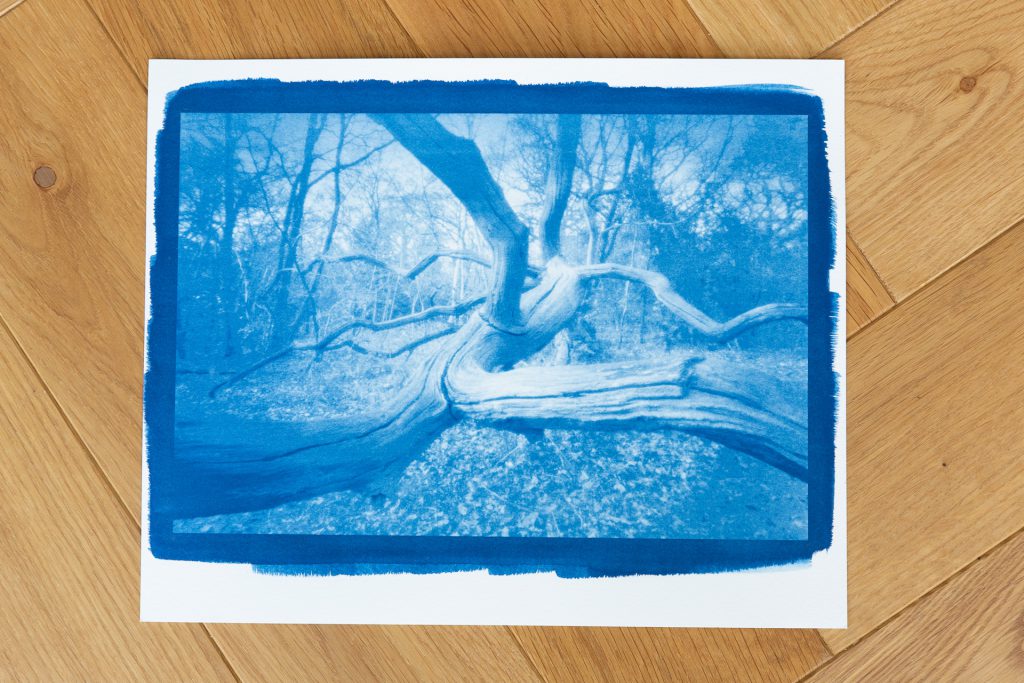
My original edit – darker and vignetted
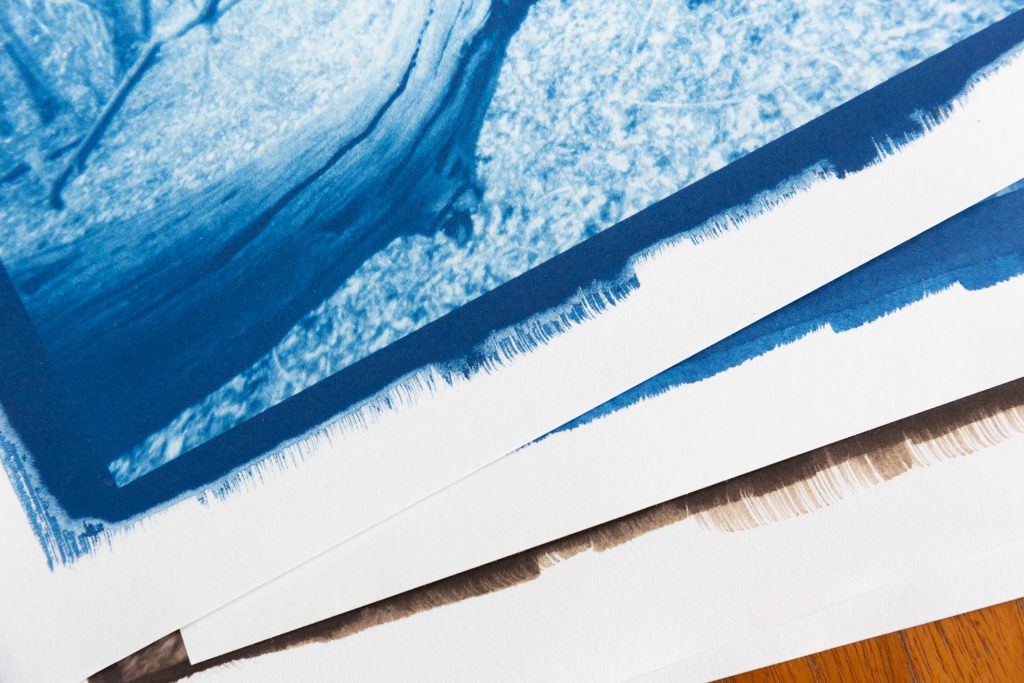
Edge markings are unique to each print. 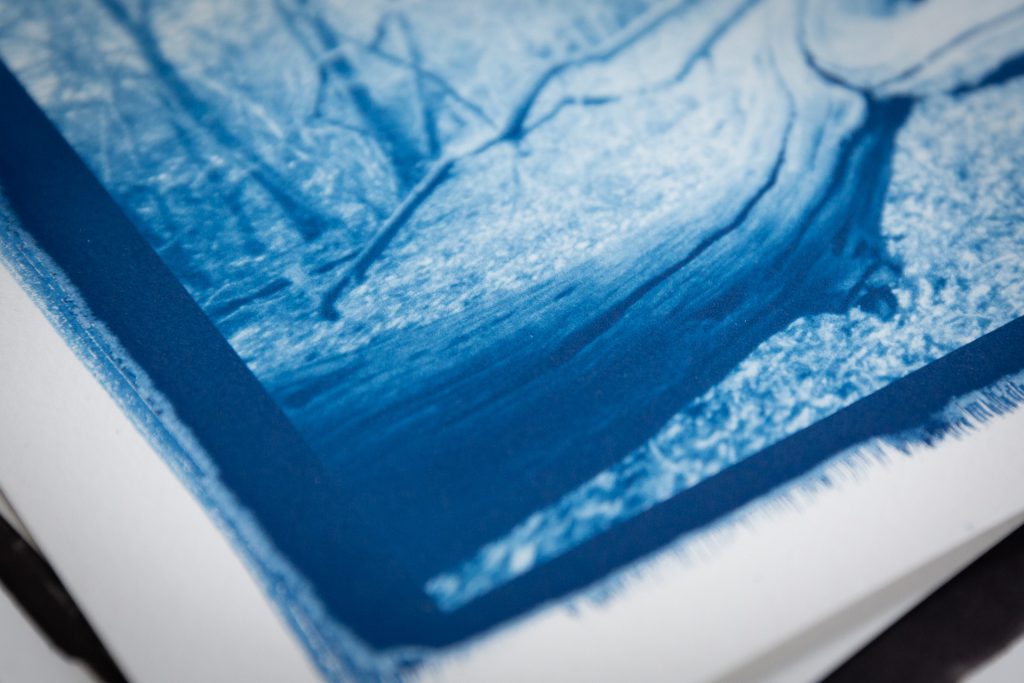
Even the darkest areas of the print has texture and detail.
The cyanotype blue is a lovely colour and works really well for this woodland scene, but the kallitypes… Well, they are very special! I really couldn’t pick whether I like the warmer selenium toned over the gold! It just goes to show that printing really is a major component to how an image communicates itself to the world and working with an experienced printer who can interpret your image can lead you in all sorts of different directions.
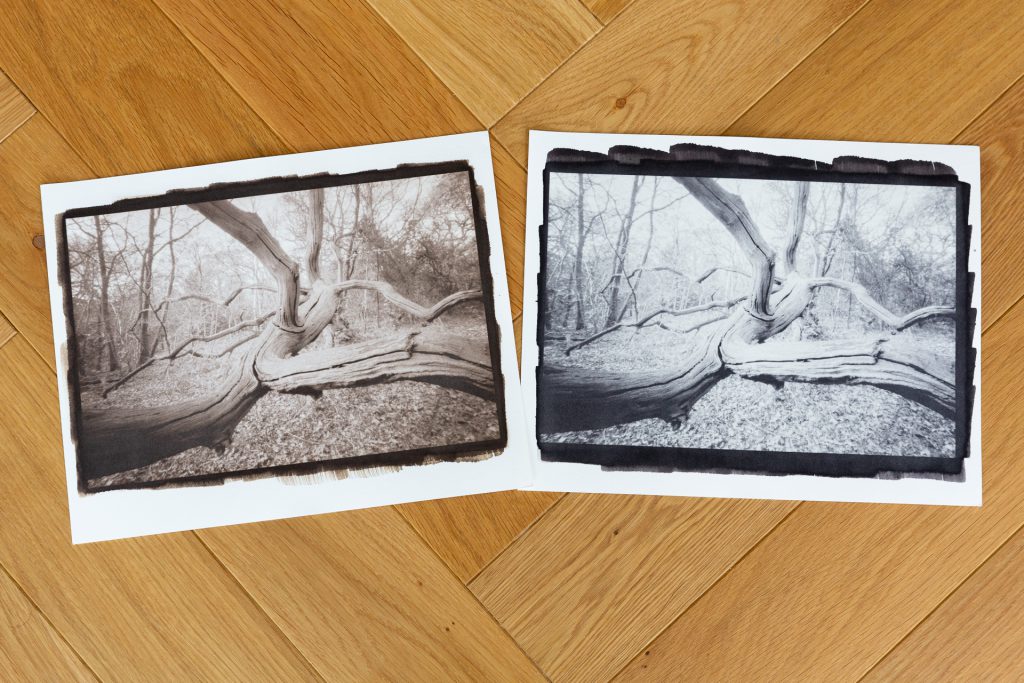
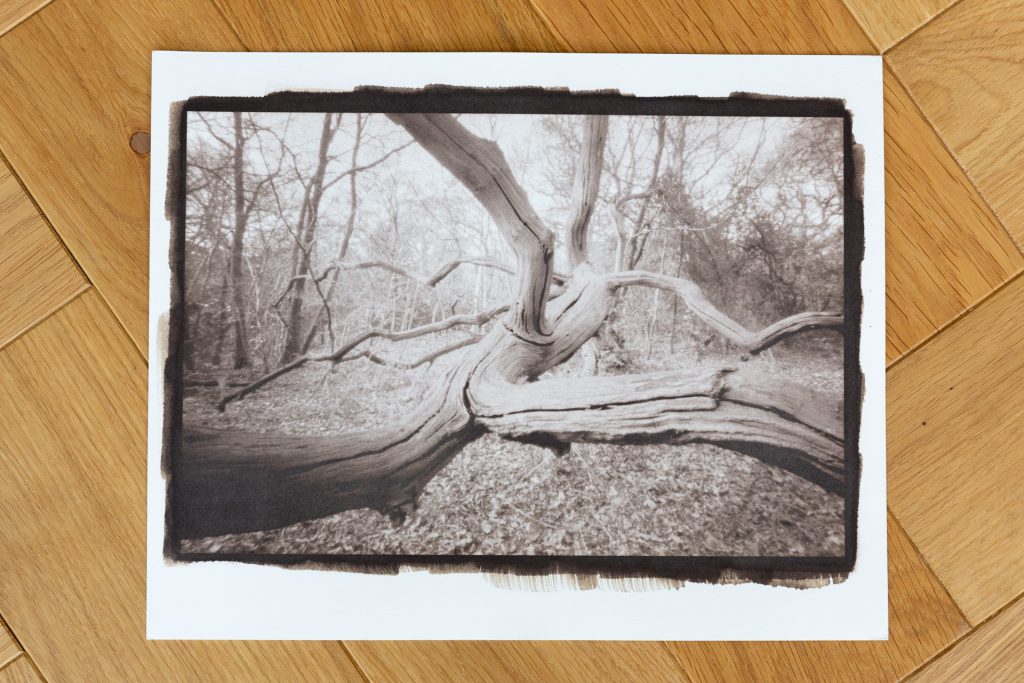
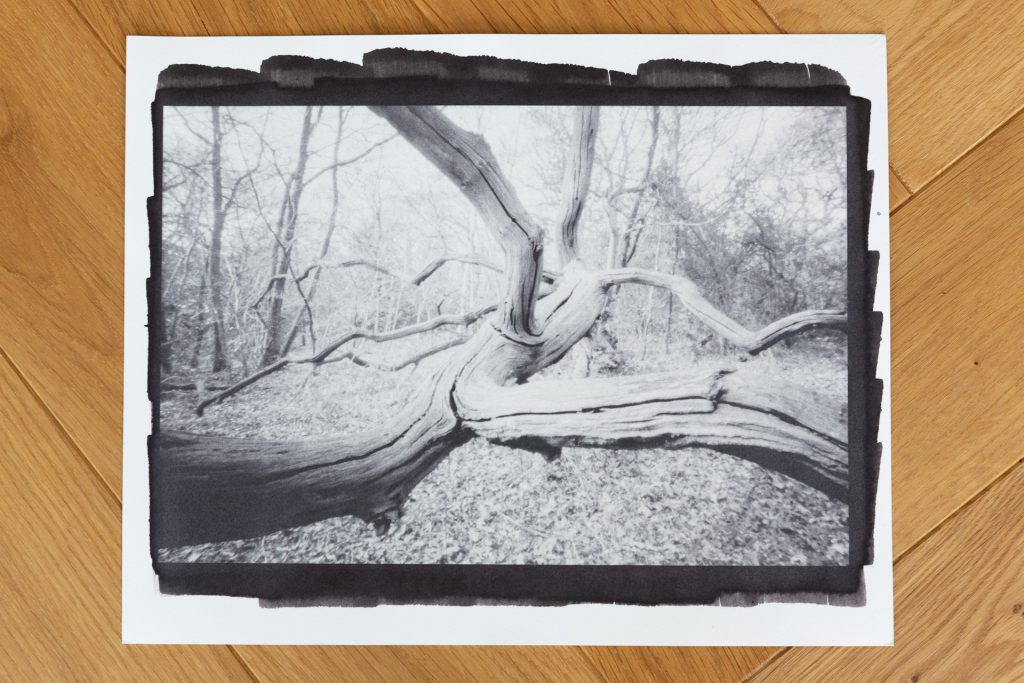
My thanks to Andrew for creating these. I wouldn’t hesitate to use his services to create future alternative processed prints. And I’m very inspired to give alternative processing a go myself one day! Fortunately, there are lots of resources online and a good few suppliers of all the materials we’d need to get started.
More about alternative printing info:
Altprocess printing | Keedle Media
And more on the pinhole camera and film supplier I used.
Thanks for reading. Do you have a favourite here? I still can’t make up my mind!
This image is available as a fine art print to buy. If you are interested do get in touch.
Discover more from Paula Smith | Photography
Subscribe to get the latest posts sent to your email.
